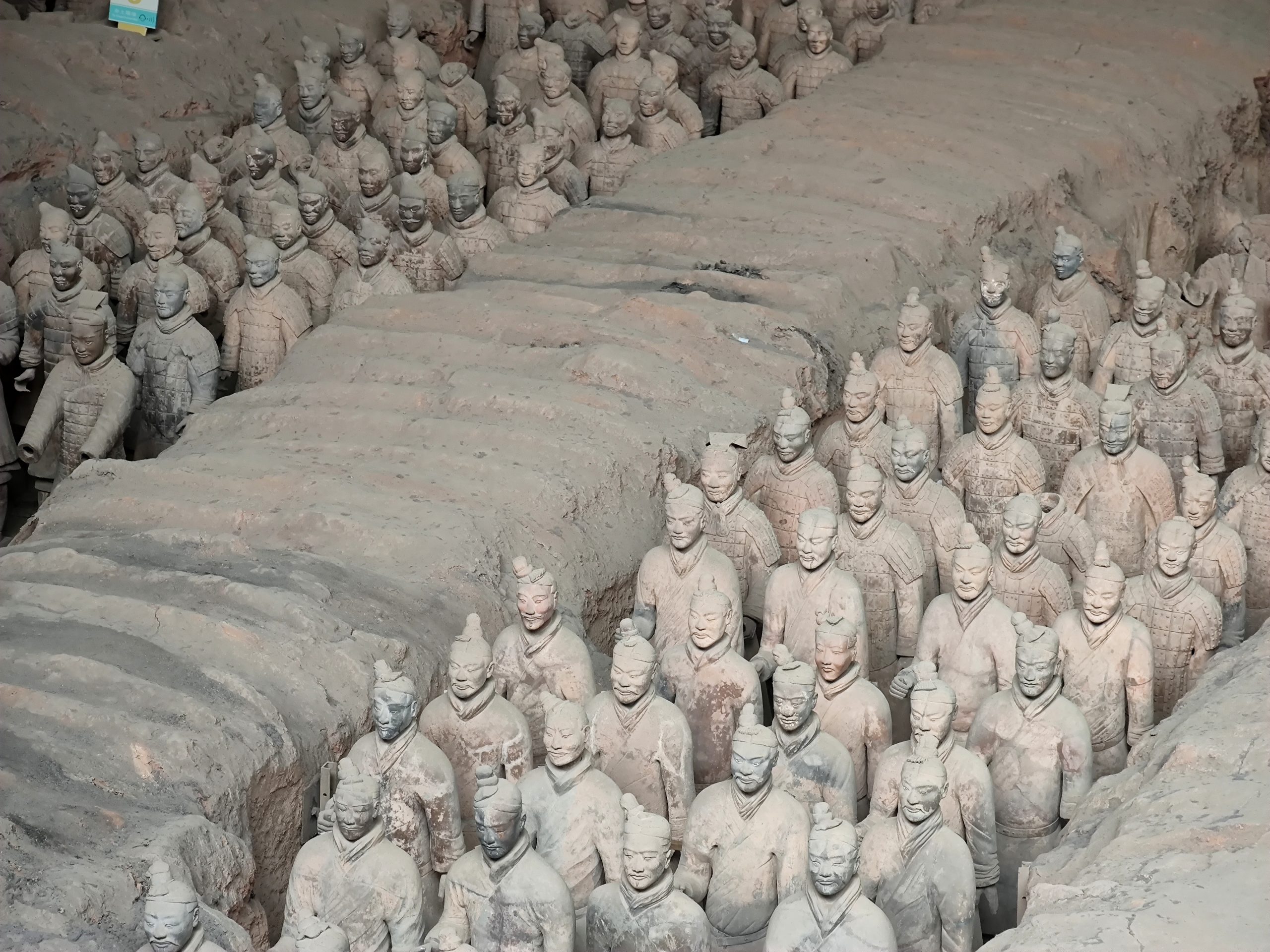
The Greatest Discoveries of the 20th Century. Terracotta Army Museum
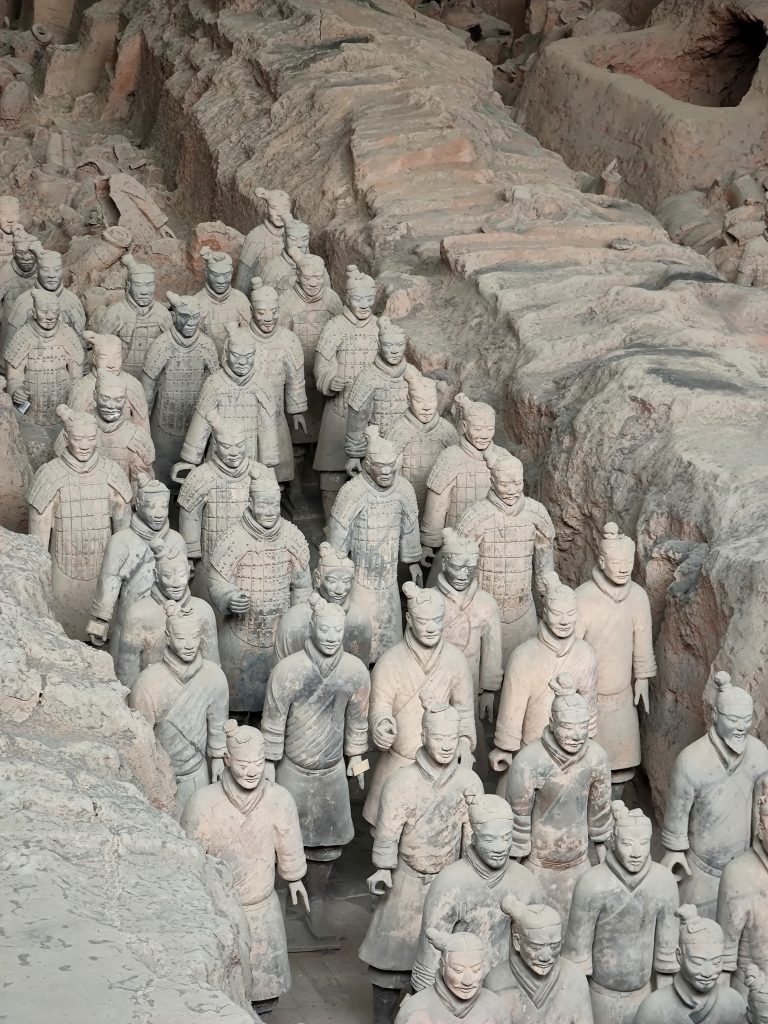
We have to take two subways and a bus to get to the Terracotta Army Museum. We notice another foreigner on the bus, but the bus driver is still surprised about us – “Foreigners have boarded, too!” he exclaims. It isn’t easy to buy the museum tickets. You see, during the Covid era, there is no such ticket office. Everything must be bought online. We need to find the right homepage and the right payment method. It’s good that we had stopped by our Chinese friend on the way to Xian, and she could help us.
I remember how difficult it was in China the first time we wanted to enter the palaces in Beijing. No ticket booths around. Only the barcodes that needed to be scanned. How to do it? How to pay? We didn’t have the Chinese application WeChat then. Now I can’t even imagine traveling in China without it.
But now we are here, in front of the Terracotta Army Museum. One of the park employees stops us and says she will help us to go through the checks. Yes, the park is big and there are many checkpoints – two separate places where to show the passports, another place where to show Covid test results, and, of course, the ticket check, too. After going through all of those, the lady offers her guide services. I had read that tourists are tricked here, and I already know all the prices for extra services. But the lady is right – she convinces us that it’s better to visit such an important, historical place with someone who can tell more about it. So we enter the big complex together, all three of us.
The lady says she is lucky as now she can practice her English – foreigners don’t come to the museum anymore. Yes, a foreigner is a rare creature in China now. And tourism, of course, has also decreased. If in the past 50 thousand people visited the Terracotta Army Museum a day, now there are only five thousand. The limit is eight thousand visitors – due to the preventive measures against the virus. As we get to know, in the past, there were also ticket offices here and only one checkpoint. But times have changed.
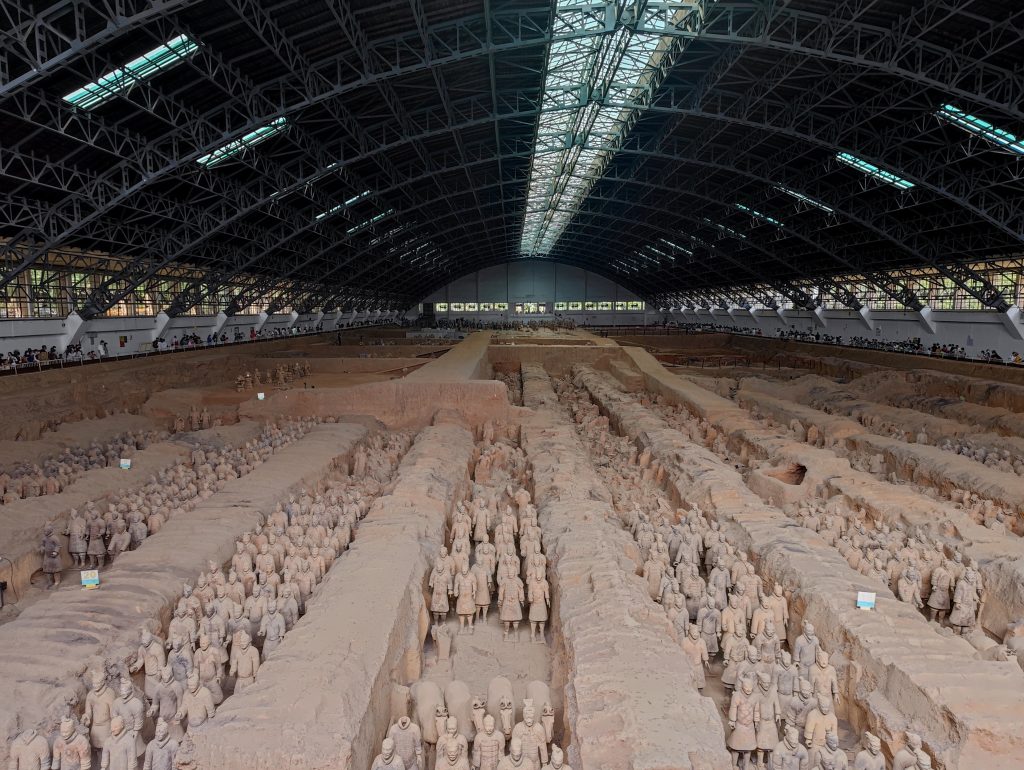
We enter a large hall the size of an airshed and see thousands of clay soldiers. I have read that the Terracotta Army was created to accompany the first emperor of China to the afterlife. He loved his greatness so much that he prepared a huge tomb ahead of time so that even after his death he could continue to rule.
The rectangular complex is located between the river and the sacred mountain. All the soldiers and horses are facing East because that is where the enemy was coming from. And, of course, the emperor built his tomb according to feng shui.
Here are thousands of detailed life-size models of Terracotta soldiers representing the bodyguard troops of the First Emperor, Qin Shi Huang. By the way, Qin was the first man to unite the seven kingdoms of China and the first to call himself not “a ruler”, but “an emperor”. And it was from this man that China got its name!

The construction of the army began in 246 BC, the emperor died (the guide says – poisoned himself) in 210 BC. The construction of the army was completed in 206 BC. The army was built by 720,000 soldiers, it took them 40 years! Men devoted their whole lives to the emperor! They did not see their families for decades, so it is said that soldiers often carved the faces of their loved ones into the statues. They also wrote their own names on the clay figures – so that in case of any mistake, the emperor could immediately execute the clumsy one.
How were the figures made? At first, it was necessary to find the clay. It was taken from the nearby mountain. Nowadays archaeologists have tried to make these figures from a different type of clay, but they did not hold together, while the ones we face now have survived even earthquakes!
When clay was found, the figures were made in parts – heads, legs, torsos… Each worker was good at making something else. Then the figures were put together with the help of eggs and sticky rice. Yes, it was an expensive process, but the emperor was a rich man. All the united China’s kingdoms gave him expensive gifts after all.
The figures were then fired in kilns and painted in bright colors. As a result, each figure looks unique, just like real people. Each differs in facial features and expression, clothing, hairstyle, and gestures, providing rich and detailed artifacts for the study of the military, cultural, and economic history of the period. However, after 2000 years of erosion and humidity, most of the figures have lost their original bright color.
Each clay figure, although empty, weighs around 200-300 kilograms. Guide says it takes about a week to make one with today’s technology. Then it took a year.
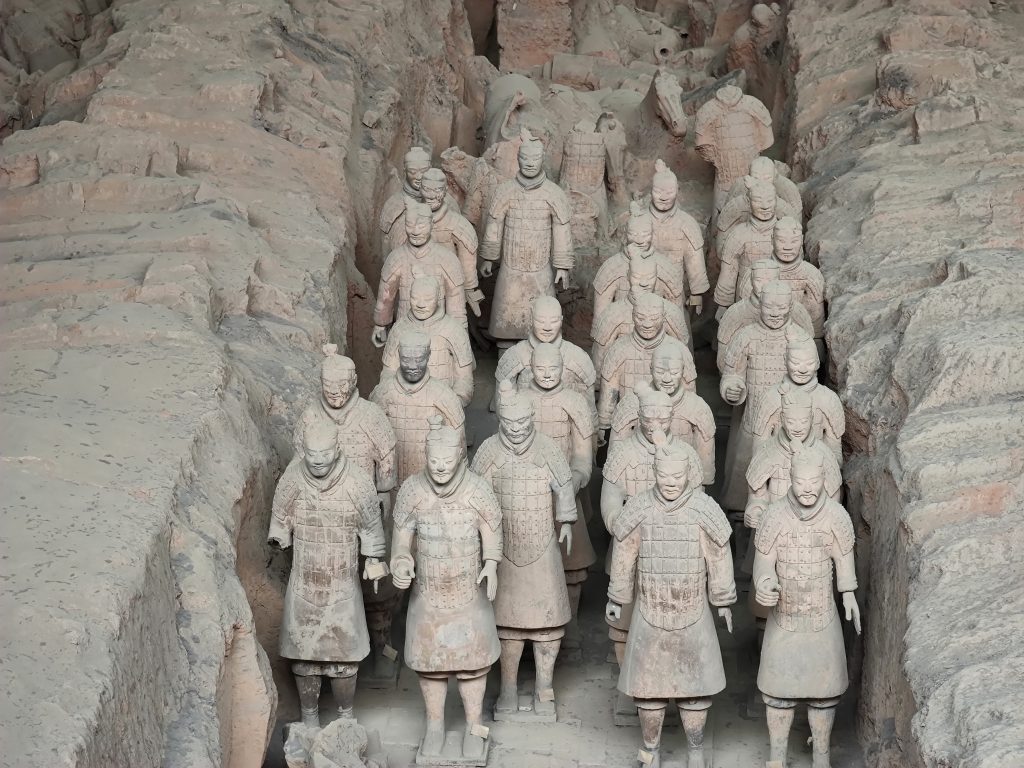
After the completion of the army, all those involved in the works were buried alive. That’s just how it was arranged those days. We are told that Arturs would have been killed as well because he’s bald and then the men without hair were executed. Maybe that’s why the Chinese have such thick and strong hair. We now remember a movie about Korea where it was said that those Koreans who had strong sweat odor were rejected by ladies in the past. Therefore, their genes were not passed on and now Koreans rarely have bad body odor. And here it’s Chinese with their hair. Turns out that in ancient times hairstyle was not only a fashion but also reflected people’s social status. The hairstyles of Terracotta soldiers vary according to their rank and the duties of their service.
Clothing varies, too. Guide says that the soldiers could choose their own clothes to fight because there was a big possibility it was their last day living. On the other hand, men of the highest rank wore uniforms. Many of the figures originally had real weapons of the time – bronze swords, longbows, arrows, spears, daggers, and other long-handled tools. The weapons were treated to resist rust and corrosion, so even after being buried for over 2000 years, they are still sharp! Now the weapons have been removed from the clay statues.
Many of the weapons and the statues themselves have been lost because four years after the completion of the Army, the people of that time came and vandalized, and burned the great complex, thus showing the pain that the emperor had caused them during the works. It is not known who actually did it, because supposedly everyone involved in the construction had to be buried alive. The guide explains that even now people have mixed feelings about this emperor. On the one hand, he united the various kingdoms. China would never be what it is today if this great man had not done it. On the other hand, he enslaved the workers and involved them in such long construction works of the tombs just so that they would be buried alive later. And he sent the men into battles where many of them lost their lives. Well… There are two sides to every coin.
The guide also mentions the current president of China. She says he reminds her of the first emperor. If something is said, it should be done. And done right away. “The Chinese do not object to anything; it’s not like in your Western countries, where you – foreigners – have our freedom”, she says. Well, one can find both the positive and the negative in everything.
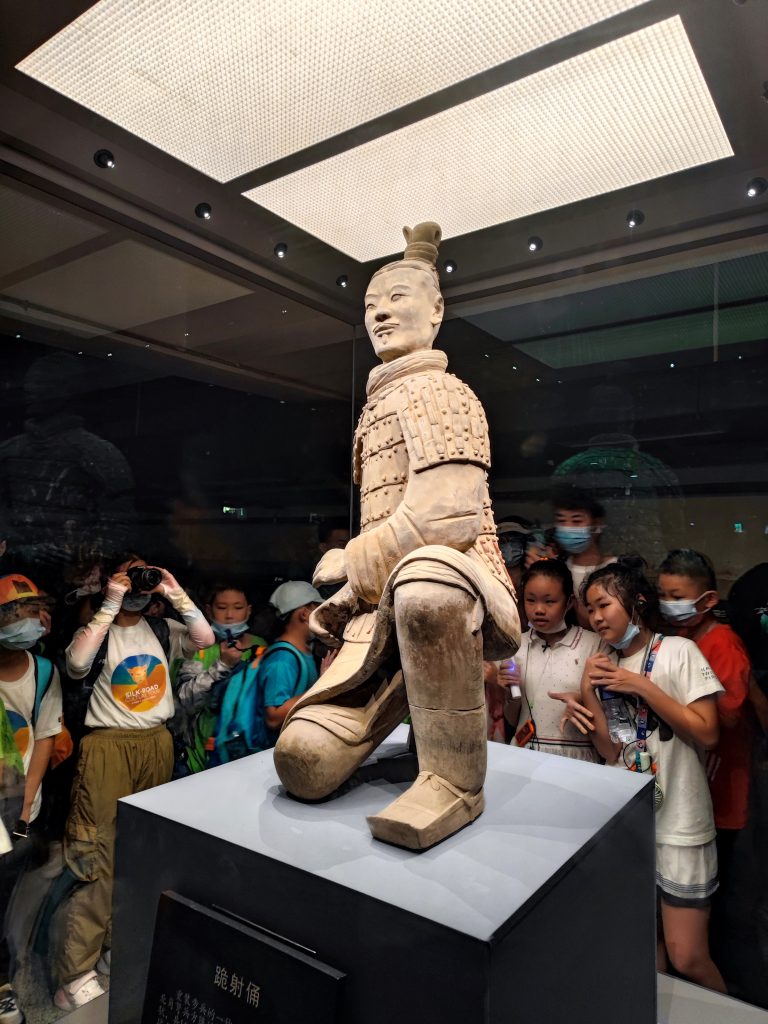
Let’s return to the fact that most of the statues were damaged only four years after they were completed. Archaeologists had to put the statues together piece by piece. And it is not an easy job. Each body has to have the right head and the right body parts. And that can only be guessed whether the right parts are put together!
Here, in the first exhibition hall, out of more than 6,000 Terracotta figures of soldiers and horses, less than 2,000 are on display. The other halls will stay closed for long, as we are told. It’s planned to excavate them for at least another 20 years. It can’t be done faster because the Chinese do not have good enough technologies yet. The Chinese have cooperated with Germany, but they are not yet ready for further collaboration.
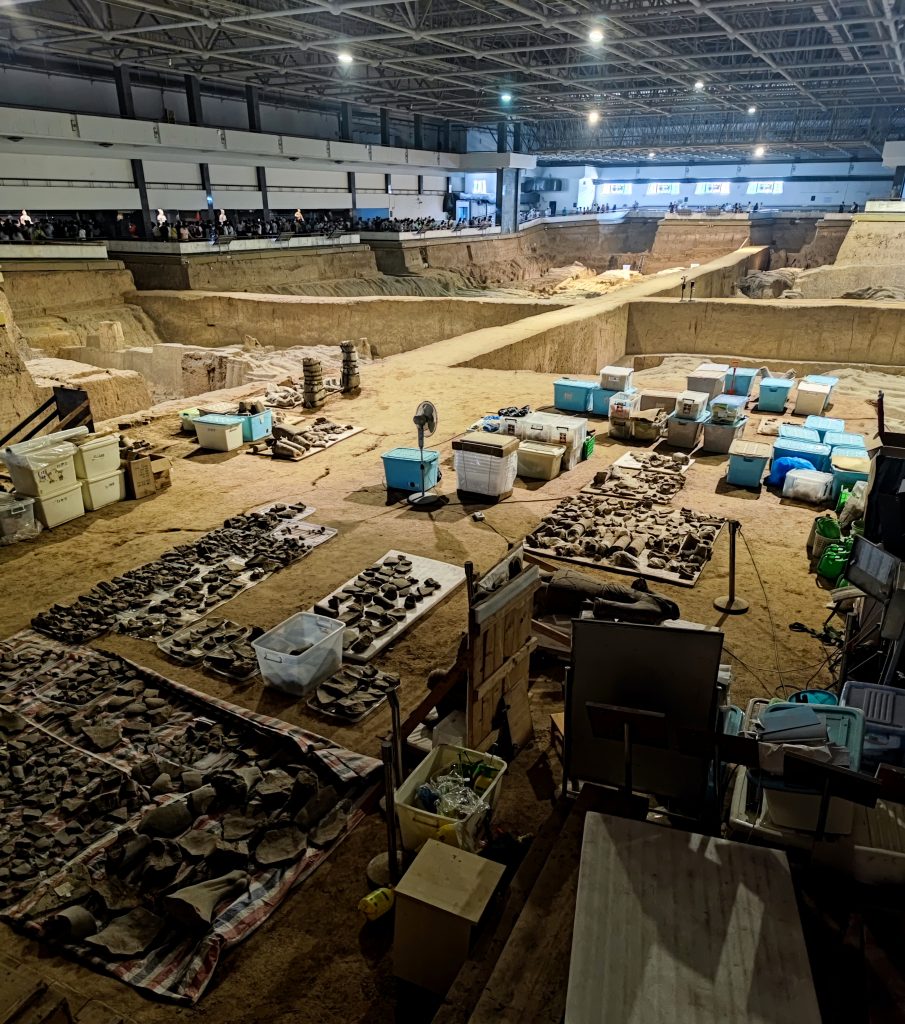
The first hall (rather the first pit) was opened for visitors in 1979. It is approximately 210 meters long and 62 meters wide, and the bottom of the pit varies from 4.5 to 6.5 meters below the ground level. In the second and third pits, the excavations have been stopped, and the restoration of the found soldiers continues. However, here we can see the images of officers that are better dressed and with small belly that shows their prosperity.
In the last hall, there are carts that consist of 3,400 pieces and are driven by four horses. The bronze horses are between 65 cm and 67 cm high and 120 cm long. Each of them weighs a total of 1234 kg. Each wheel of the cart had 1,720 gold and silver ornaments weighing 7 kg. The carriages were so well made that they are named the best preserved among the oldest known bronze relics in China.
Either way, the Xi’an Terracotta Army Museum is considered one of the most impressive archaeological sites in the world and one of the greatest discoveries of the 20th century. And it was discovered very recently – only in 1974 – when some farmers dug a well here. It’s funny that at first, the farmers buried everything they had found because they thought they were digging up the graves of the ancestors, and that’s not a good sign. However, one of them was more courageous and invited specialists to the site. They then recognized the images of soldiers of the first dynasty. It was a huge celebration for China.
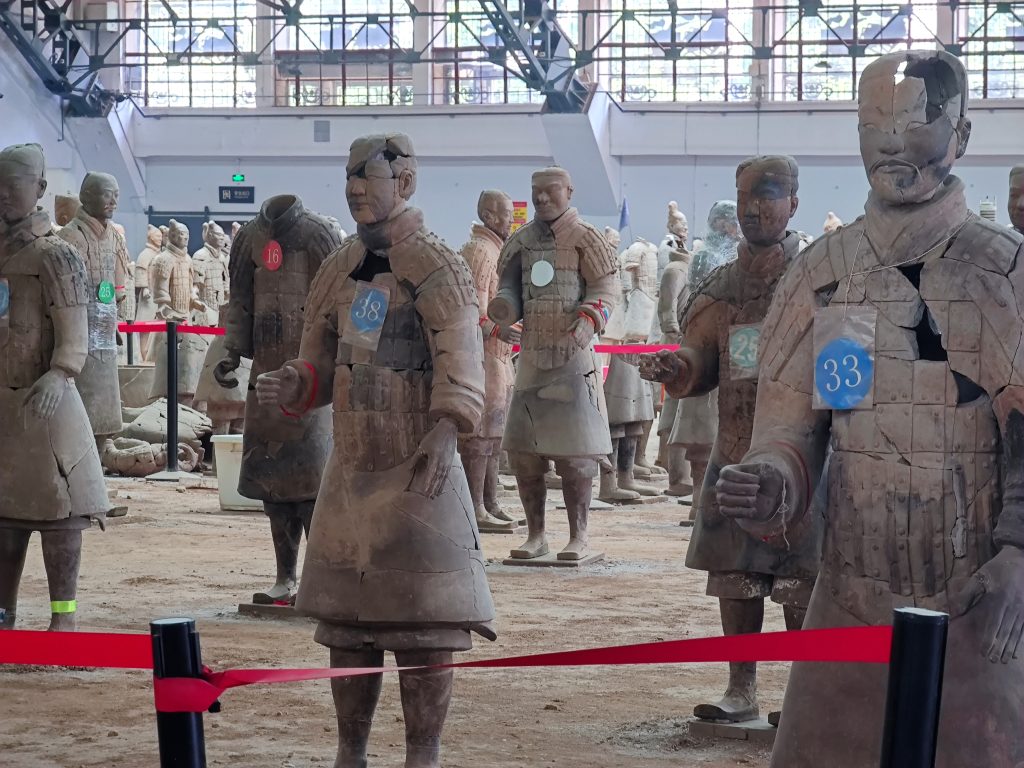
In 1976, adjacent pits with higher-ranking men and carts were discovered, and in 1979 the area was opened for inspection. In 1987, the Terracotta Army was included in the UNESCO World Heritage List.
Actually, this army was discovered several times in history. You see, it is located in a very important place between the river and the mountain, and many treasure hunters look for their big catch in such places. But after discovering only clay statues, the site was again buried every single time.
During our excursion, the guide tries to offer us all kinds of extras. For example, a 3D film about the fire that destroyed the statues. But the whole event is already quite expensive so we are not ready to pay ten extra euros for the film. The lady also takes us to one of the farmers who supposedly dug up that well. Now the uncle signs overpriced books for gullible tourists. I have already read that tour guides will try to squeeze the maximum out of a tourist, and much more from a foreigner! But I have to say that I’m very satisfied with the long story and journey through time with this Chinese lady.
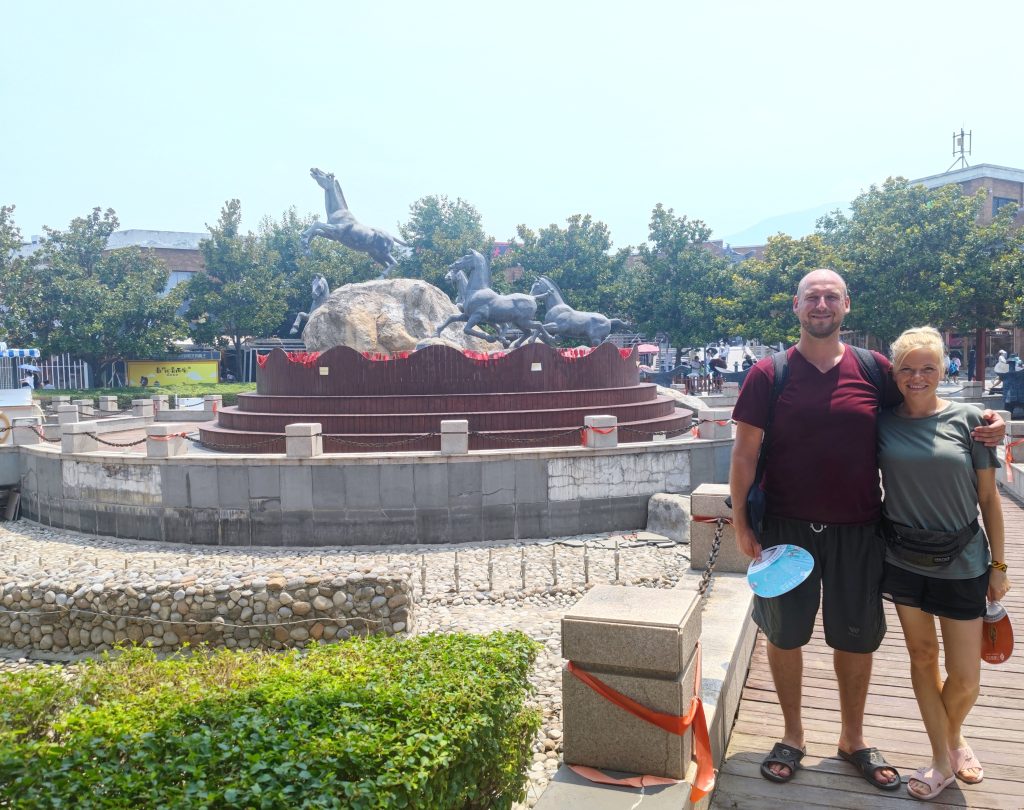
We continue our walk following the exit signs. There are many trying to sell us statues of horses that bring good luck and jade that brings good luck. There are lucky dishes and lucky inscriptions. The Chinese are very superstitious, so it’s easy to sell them anything that could invoke their happiness in real life. But for us, happiness is a little different. It comes with openness to the world. It’s hard to make such a mind unhappy, isn’t it?
We are taken through jade shops and taught how to distinguish a real jade from an artificial one. With this knowledge, we can buy it elsewhere for less money. However, jade is said to be special here. It is taken from the nearby hill where the emperor built his tomb. By the way, the emperor ordered his soldiers to wear jade armor for four months before the battles. You may ask why. Jade gets its color from the minerals in the river. When the body is healthy, it absorbs the minerals from the jade, and the jade then changes its colour. If it didn’t change the colour, the soldier was considered to be useless, because only the strongest and the healthiest were taken into the battle. And, of course, the ones with hair.
And so… We end this interesting tour. It’s plus 34 degrees Celsius outside, and unbearably muggy. We have to look for salvation in air-conditioned buses. The temperature at the airport of our next destination today is plus 39. At the airport! Two-hour-long air-conditioned ride makes us freeze again, and again it makes us a little bit stronger. It is just an average day in China – full of miracles, full of challenges, and full of unforgettable moments!